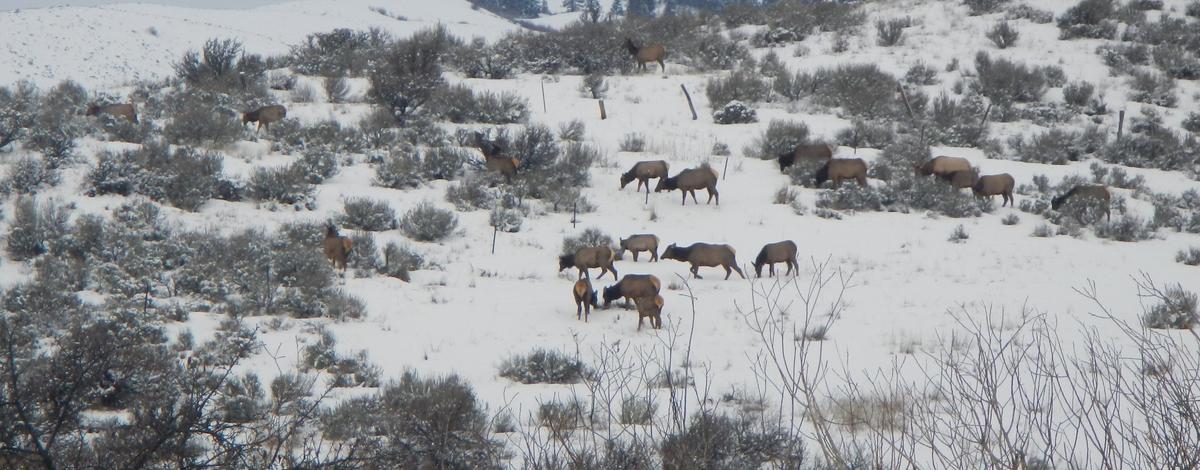Idaho Fish and Game enforcement staff will be conducting increased patrols in the Boise River Wildlife Management Area this winter to ensure compliance with leashed dog requirements and access restrictions, as well as to address littering issues on trails.
“We have a number of issues that continue to come up on the Boise River Wildlife Management Area, and a couple of them are related to people using the trail system with their dogs,” said WMA manager Ann Moser. “The biggest issue we continue to see is people ignoring the requirement for dogs to be leashed between Nov. 16 and April 30. We also see people leaving pet waste bags on the trail, instead of packing them out.”
Doing either of those things could lead to an expensive citation: Allowing a dog to run at large is an infraction with a $300-plus dollar fine attached to it, and littering is an infraction that carries a fine of more than $200.
There have also been issues with trail users accessing the Wildlife Management Area from undesignated trails.
While Fish and Game does not close the Boise River WMA to the public during winter, it does close access roads to motorized vehicles and requires dogs to be leashed. Hunting dogs that are actively hunting during the upland gamebird season are exempt. These rules are in place to allow responsible recreational use at the WMA while also protecting wintering big game animals. It creates problems for wildlife when these rules aren’t followed.
“These issues — particularly unleashed dogs and the use of undesignated trails — can substantially impact the wellbeing of wintering deer and elk,” said Regional Conservation Officer Matt O’Connell. “Providing winter range is the primary purpose of the Boise River WMA, and our enforcement officers will be working to ensure that the rules established to protect wintering big game herds are followed.”
Balancing recreation with wildlife
Good winter range for big game has abundant shrubs and grasses, areas where deep snow doesn’t accumulate, and a low level of disturbance so animals can rest and preserve limited fat reserves that carry them through winter and into spring.
The 18,500 acres on the Boise Front within the Boise River Wildlife Management area checks all those boxes, and the WMA makes it possible for one of the state’s largest mule deer herds to thrive near Idaho’s largest population center. Depending on the year, 5,000 to 8,000 mule deer and up to 1,800 elk use the WMA to escape snow as they migrate from as far away as the Sawtooth mountains. Although they spend a small portion of their year on the WMA, it can be a life saver.
All that said, the WMA also sees a ton of use from recreationists given its proximity to Boise, even in the winter. Balancing recreational use with protecting wintering wildlife can be a challenge, and it’s one that requires buy-in from recreationists on the WMA. Disturbances from humans, dogs and other things can keep animals moving and burning precious fat reserves or push them off the WMA. When disturbance forces deer and elk to move to adjacent agriculture lands, into subdivisions and onto busy highways, that creates a variety of other problems.
Following the limited restrictions Fish and Game has in place during the winter is imperative for trail users and increases the chances of a young deer or elk surviving its first winter. So although most times of year wildlife and recreation are compatible, Fish and Game officials must consider wildlife first during winter.
For dog owners who are looking for a place to hike with their pet off-leash in the Boise area, a list of controlled off-leash trails is available on the Ridge to Rivers website.

